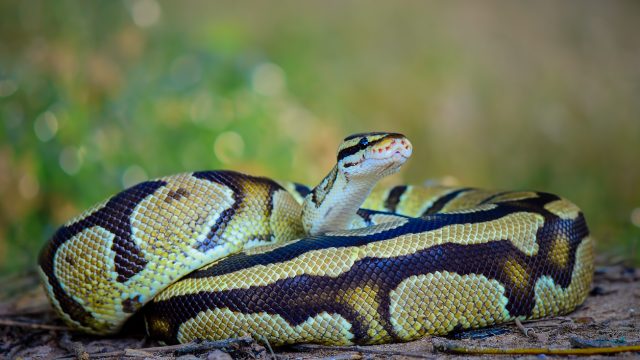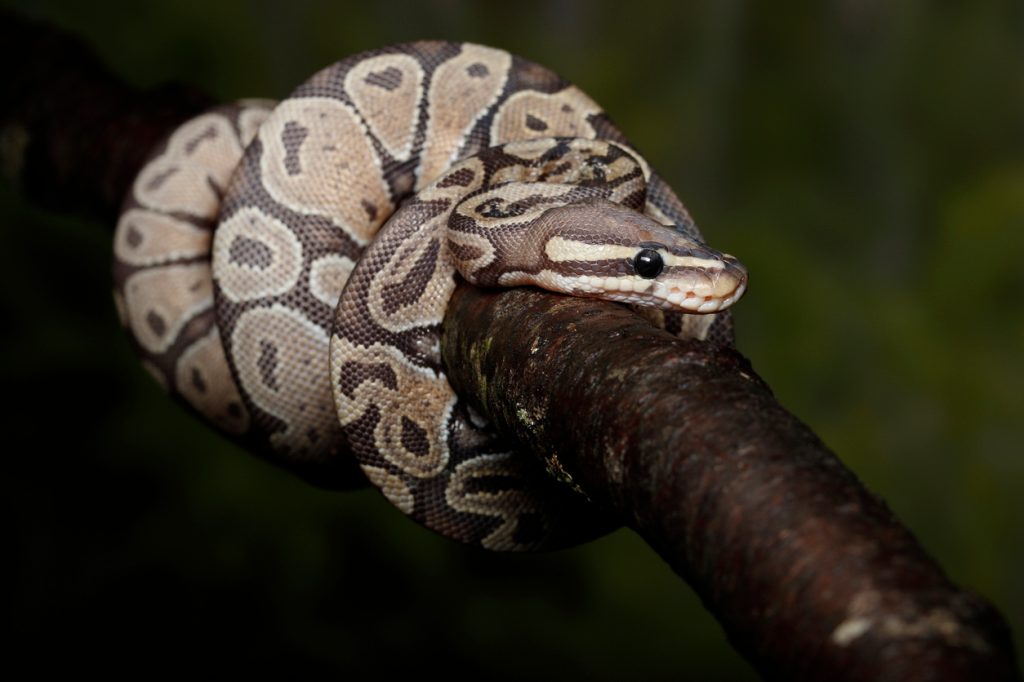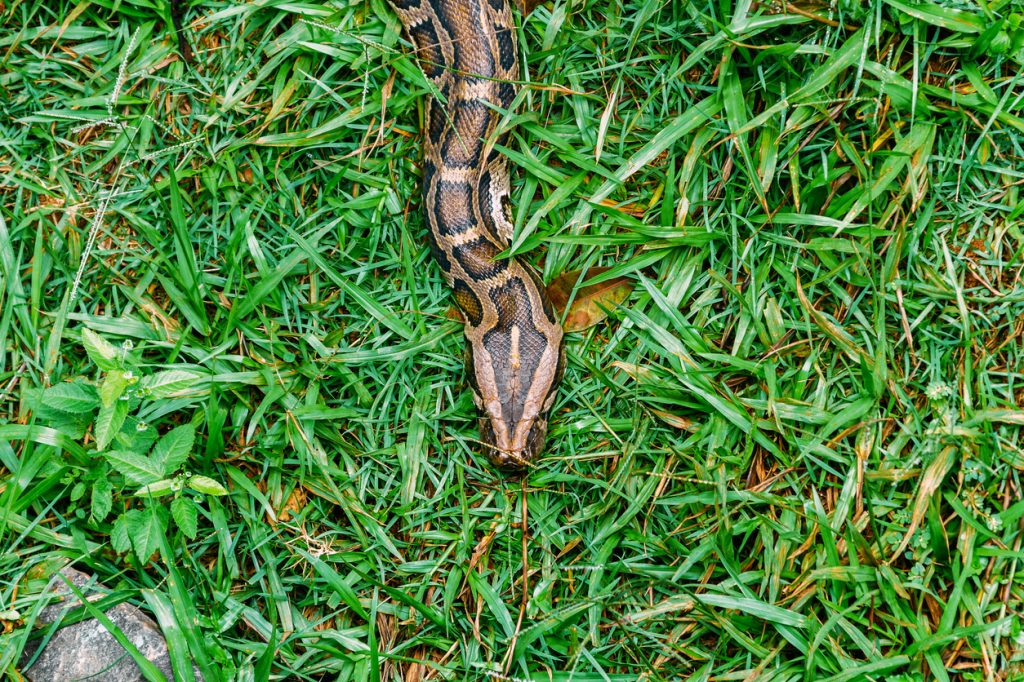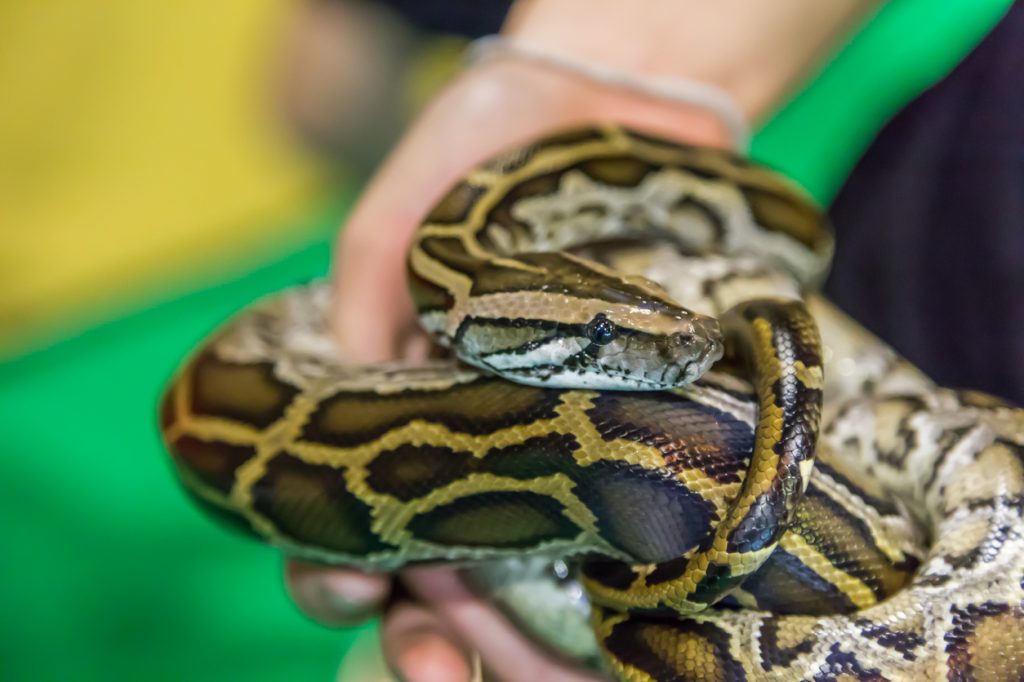24 Invasive Pythons Found in the U.S. in One Month

Invasive species of any kind can do irreparable harm to the environment if left unchecked. States like Florida are already dealing with an onslaught of Burmese pythons that were introduced to the wild and are currently threatening ecologically sensitive areas as they continue to spread. Unfortunately, new potential threats can also spring up unexpectedly. And now, authorities say 24 invasive pythons were recently found in the U.S. in just one month. Read on to see where they’ve been discovered and how officials are dealing with the issue.
RELATED: 8 Things in Your Yard That Are Attracting Snakes to Your Home.
A town in Florida found two dozen invasive ball pythons in the past month.

Florida is no stranger to nonnative species showing up and causing problems—including of the giant reptile variety. But recently, officials have been concerned about a new potential ecological threat after removing two dozen ball pythons from the wild in the past month.
Residents in the Prairie Lakes neighborhood of St. Augustine say that the three- to four-foot snakes have become somewhat of a common sight lately.
“We have found 22 in a matter of four weeks,” Vincent Myers, a Prairie Lakes resident who has captured many of the snakes himself, told local NBC affiliate WTLV on Aug 1. “We found them out on the main road, under the hood of a car, people will drive at nighttime after the rain and they will be crossing the road.”
The growing infestation doesn’t appear to be showing any signs of slowing down, either: Just a day later, the discovery of two more pythons in the neighborhood brought the total count to 24.
RELATED: 17-Year-Old Bitten by Rattlesnake in His Home—Where It Was Hiding.
These snakes aren’t being hunted like other invasive species in the state.

Unlike the ongoing issue with invasive Burmese pythons that has led to state-sanctioned culling and hunting, locals in St. Augustine are taking a different approach to the animals. Myers says he’s added an old paint roller to a stick using tape as a makeshift tool to pick up the reptiles and has turned an old bag into a “snake tote” to safely collect the animals.
From there, he’ll hand off the snake to professionals who can assess their health. “I’ll take them into the vet, get them looked at, make sure they don’t need any medical attention until I get them all adopted out,” Sky Bennett, a representative from the Jacksonville Herpetological Society, told WTLV.
RELATED: 8 Plants That Will Keep Snakes Out of Your Yard, According to Pest Experts.
Officials believe a local pet owner released the snakes into the wild.

While they’re being handled differently, local authorities say the recently discovered ball pythons likely have at least one thing in common with the quickly spreading Burmese pythons.
“They come in all different colors. So, people love to breed them to mix and match different colors and patterns, and what this looked to be was a breeding project that somebody had done and decided that they didn’t want anymore,” Isaac Scott, a technician with local animal control company CritterPro Inc., told WTLV.
However, local authorities with the Florida Fish & Wildlife Conservation Commission (FWC) said it’s unlikely that the reptiles are reproducing in the wild. In fact, they’re not very well adapted to the local environment, which makes the situation more of a humanitarian issue than a pest problem.
“It is animal cruelty to release these animals into the wild because the likelihood of them surviving is not high, so you’re basically giving the animal a death sentence,” Scott told the news outlet.
RELATED: For more up-to-date information, sign up for our daily newsletter.
Anyone who finds a python is urged to call officials to have it safely and humanely retrieved.

Since these snakes are docile creatures that have become popular pets, residents have nothing serious to fear with their new neighbors. However, anyone who finds one in the wild has been advised to call authorities right away so they can be safely rescued.
“Don’t kill them. Call somebody that can grab them,” Bennett said. “Their lives matter just as much. Just because they are scary doesn’t mean they don’t deserve to live.”
Officials also used the latest python discovery as a way to remind residents that they have options for rehoming animals. “If members of the public have a nonnative pet, whether kept legally or illegally, that they can no longer care for, they can be surrendered through the FWC’s Exotic Pet Amnesty Program with qualified adopters,” the agency wrote in a statement.
Scott adds that while the intense summer heat is likely fine for the reptiles, the arrival of winter is something they probably wouldn’t be able to survive to eventually begin reproducing in the wild. But he said it’s still not outside the realm of possibility.
“They are reptiles,” Scott told WTLV. “So they are masters at adaptation, and so there’s no counting them out.”